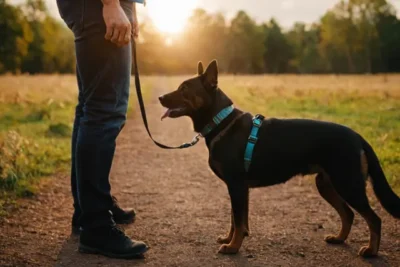

Positive reinforcement is a highly effective technique for teaching bite inhibition in dogs. This involves rewarding your dog for exhibiting gentle and controlled behavior during play or interaction. When your dog bites too hard, you can immediately withdraw your attention and stop the play session. This teaches your dog that biting too hard leads to the end of fun. Conversely, when your dog exhibits gentle biting or avoids biting altogether, you can reward them with treats, praise, or playtime. This positive reinforcement helps your dog understand that gentle behavior is more rewarding than rough biting.
Another technique for teaching bite inhibition is redirecting your dog's behavior. When your dog starts to bite or nip, you can redirect their attention to a more appropriate chew toy or interactive game. This helps them understand that biting humans or other pets is not acceptable, but biting toys or engaging in appropriate play is encouraged. By consistently redirecting their behavior, your dog will learn to associate biting with appropriate objects and play, rather than using their teeth on people.
Gentle handling and touch are essential for teaching bite inhibition in dogs. By regularly handling your dog's paws, ears, and mouth in a gentle and non-threatening manner, you can help them become more comfortable with human touch. This reduces the likelihood of them resorting to biting when they feel anxious or threatened. Gradually increase the level of handling and touch over time, always rewarding your dog for remaining calm and relaxed. This technique helps your dog develop a positive association with human touch and reduces the likelihood of them biting in stressful situations.
Socialization with other dogs is crucial for teaching bite inhibition. When dogs interact with each other, they naturally learn how to control their biting and play behavior. Through play sessions with other dogs, your dog will learn to gauge the appropriate level of force when biting or mouthing. They will also learn how to communicate their discomfort or boundaries without resorting to aggressive biting. Regular socialization with well-behaved dogs can greatly contribute to your dog's understanding of bite inhibition.
Controlled play sessions are an effective way to teach bite inhibition in dogs. During these sessions, you can engage in interactive play with your dog using toys or games that encourage gentle biting or mouthing. If your dog becomes too rough or bites too hard, you can immediately stop the play session and withdraw your attention. This teaches your dog that rough play or hard biting leads to the end of playtime. By consistently reinforcing gentle play behavior and avoiding rough play, your dog will learn to control their biting and play more gently.
Consistency and patience are key when teaching bite inhibition to dogs. It's important to set clear boundaries and consistently reinforce them. This means responding consistently to any biting behavior, whether it's too hard or too rough. By consistently rewarding gentle behavior and redirecting or withdrawing attention for rough biting, your dog will learn what is acceptable and what is not. It's also important to be patient and understand that teaching bite inhibition takes time. Every dog learns at their own pace, so it's important to remain patient and consistent throughout the training process.
If you're struggling to teach bite inhibition to your dog, seeking professional training can be beneficial. A professional dog trainer can provide guidance, support, and specialized techniques to help your dog learn bite inhibition effectively. They can assess your dog's behavior, identify any underlying issues, and tailor a training plan specifically for your dog's needs. Professional training can provide you with the tools and knowledge to effectively teach bite inhibition and address any other behavioral concerns your dog may have.
Supervision and management are crucial when teaching bite inhibition to dogs. It's important to closely supervise your dog during playtime or interactions with other pets or people. This allows you to intervene and redirect their behavior if they start to bite too hard. Additionally, managing your dog's environment can help prevent situations that may trigger rough or aggressive play. This includes providing appropriate chew toys, creating a safe and calm environment, and avoiding situations that may overstimulate your dog. By closely supervising and managing your dog's environment, you can prevent situations that may lead to excessive biting or rough play.
Teaching bite inhibition in dogs is an essential part of their training and socialization. By using positive reinforcement, redirecting behavior, gentle handling and touch, socialization with other dogs, controlled play sessions, consistency and patience, professional training, and supervision and management, you can effectively teach your dog to control their biting and play more gently. Remember, every dog is unique, so it's important to tailor your training approach to your dog's individual needs and personality. With time, patience, and consistent training, your dog can learn to exhibit appropriate bite inhibition and become a well-behaved and gentle companion.
Related posts